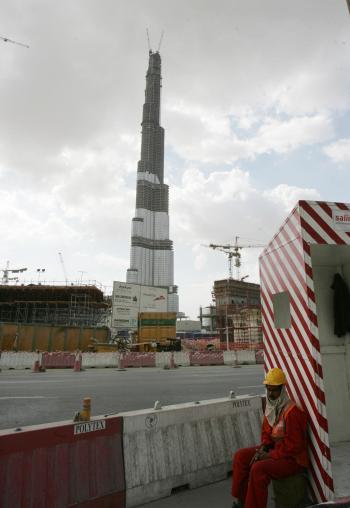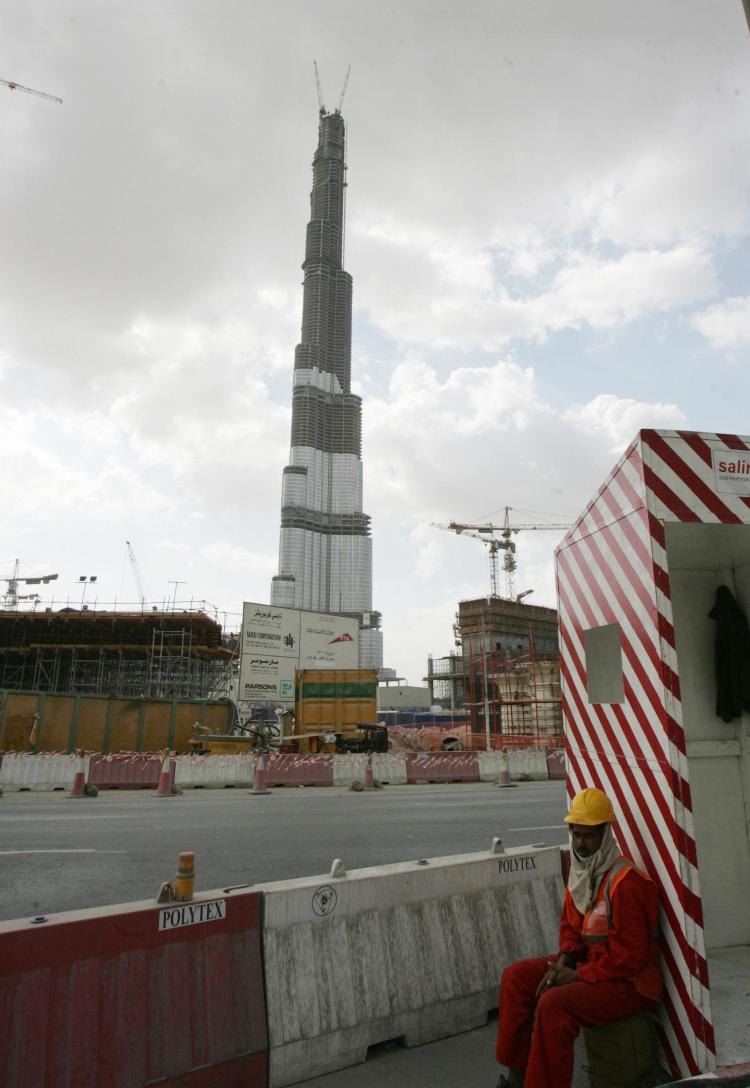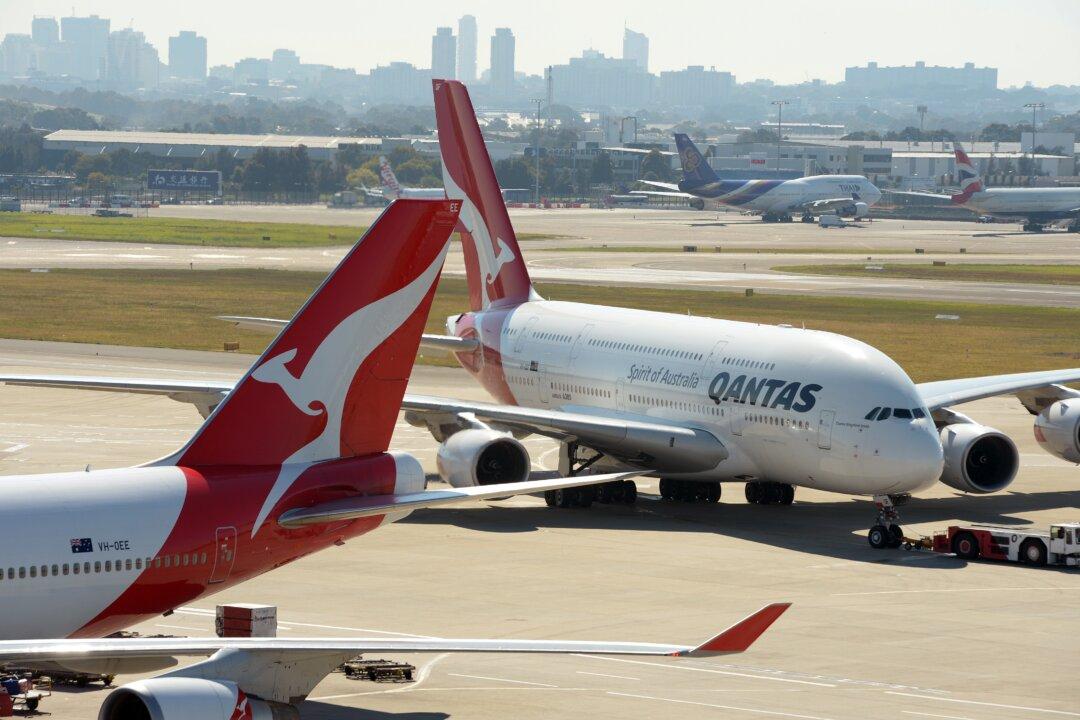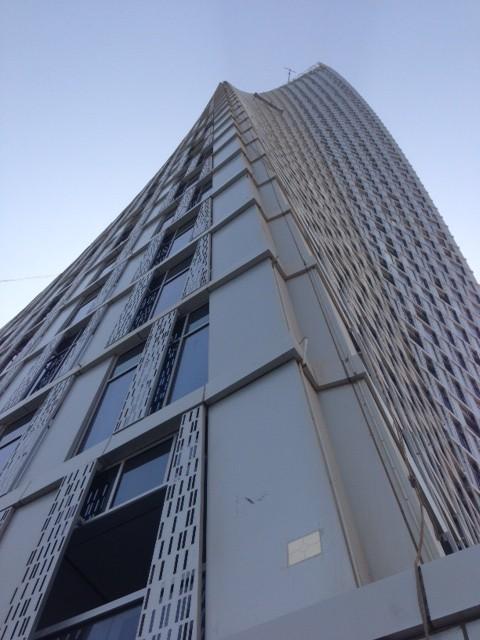DUBAI, United Arab Emirates—The rows of palm trees, towering skyscrapers and glimmering malls that form the backdrop of everyday life in Dubai, is for millions of expatriates only a temporary home.
In a city where 83 percent of the population are expatriates—tied to the country only by the stability of their jobs—life in the cosmopolitan Middle Eastern hub is often imbued with a transient quality.
Chris Hamilton has been working for a media company in Dubai for two years now, and is preparing to leave in the coming weeks.
“No one stays here forever,” he said. “For me this has never been home. The last two years have just been a parenthesis.”
The sentiment is echoed among thousands of other expatriates, many of whom can count on one hand the number of years they plan to stay in the emirate.
The popular classifieds website dubizzle.com, is often used by residents leaving the country to sell off the furniture they have accumulated.
Charlotte, a German resident who was leaving after four years in Dubai, was inviting guests to her home to sell all items that were simply too large to take home.
“All of this is for sale,” she said, gesturing wide to a room full of odds and ends that included coffee tables, a sound system and a cat-scratching pole.
“Whatever I can sell, I will, whatever remains after two weeks I will have to throw away.”
Dubai, famous for its luxury malls, is largely free of charity shops that in many developed countries provides a place for low-income classes to buy furniture for knocked down prices.
However, one man is bucking the trend. Described as the “Robin Hood of the UAE,” Faisal Khan collects secondhand furniture from residents who are leaving the country and redistributes it to low-income families and workers.
“Around 95 percent of people have furniture or other belongings that they can’t sell by the time they leave the country,” he said.
“Instead of throwing it away, they give it to me and I redistribute it to low-income families and workers.”
Away from the glitz of Dubai’s fashionable Marina or the beachside district of Jumeirah, millions of construction workers mostly from the Indian subcontinent live in cramped labor camps in the industrial areas of the city.
Few can afford new clothes or furniture for their sparse accommodation and Khan has taken it upon himself to redistribute whatever he collects to them.
“You would not imagine how much they appreciate it,” he said.
Of the expatriate population, the majority are from India, followed by Pakistan, the Philippines and Sri Lanka.
Although the population of the city is constantly shifting, certain areas have gradually become associated with certain ethnicities.
One such area is Karama, where the majority population is from South India and the dominant language is Malayalam. However the influence of other cultures on the urban environment is strictly curtailed.
Only 17 percent of the population in Dubai are UAE nationals, according to census data from 2005. Owing to the numerical dominance of expatriates, there are fears from locals over the erosion of the national identity.
Yasser Elsheshtawy, professor of Architecture at UAE University, and author of the recently published book “Dubai: Behind an Urban Spectacle” said that expatriates were limited in the way they could “personalize” the areas where they lived.
“There is a certain desire for order that seems to override any attempts by residents to attach meaning to the places they inhabit,” says Elsheshtawy.
He said that on one occasion he saw a local man angrily pulling down flyers posted to the walls of buildings advertising bed spaces for Filipino or South Indian compatriots.
“There are, on occasions, attempts by the municipality to remove these ‘unsightly’ fliers,” he said. “Yet once they are removed they are back again.”
However, Elsheshtawy’s book also documents the emirate’s “forgotten spaces,” where expatriate cultures are allowed to enrich the urban environment.
“What makes cities interesting is that they should have a ‘lived-in’ quality,” he said.
“[This] ultimately leads to a stronger attachment to place.”
In a city where 83 percent of the population are expatriates—tied to the country only by the stability of their jobs—life in the cosmopolitan Middle Eastern hub is often imbued with a transient quality.
Chris Hamilton has been working for a media company in Dubai for two years now, and is preparing to leave in the coming weeks.
“No one stays here forever,” he said. “For me this has never been home. The last two years have just been a parenthesis.”
The sentiment is echoed among thousands of other expatriates, many of whom can count on one hand the number of years they plan to stay in the emirate.
The popular classifieds website dubizzle.com, is often used by residents leaving the country to sell off the furniture they have accumulated.
Charlotte, a German resident who was leaving after four years in Dubai, was inviting guests to her home to sell all items that were simply too large to take home.
“All of this is for sale,” she said, gesturing wide to a room full of odds and ends that included coffee tables, a sound system and a cat-scratching pole.
“Whatever I can sell, I will, whatever remains after two weeks I will have to throw away.”
Dubai, famous for its luxury malls, is largely free of charity shops that in many developed countries provides a place for low-income classes to buy furniture for knocked down prices.
However, one man is bucking the trend. Described as the “Robin Hood of the UAE,” Faisal Khan collects secondhand furniture from residents who are leaving the country and redistributes it to low-income families and workers.
“Around 95 percent of people have furniture or other belongings that they can’t sell by the time they leave the country,” he said.
“Instead of throwing it away, they give it to me and I redistribute it to low-income families and workers.”
Away from the glitz of Dubai’s fashionable Marina or the beachside district of Jumeirah, millions of construction workers mostly from the Indian subcontinent live in cramped labor camps in the industrial areas of the city.
Few can afford new clothes or furniture for their sparse accommodation and Khan has taken it upon himself to redistribute whatever he collects to them.
“You would not imagine how much they appreciate it,” he said.
Of the expatriate population, the majority are from India, followed by Pakistan, the Philippines and Sri Lanka.
Although the population of the city is constantly shifting, certain areas have gradually become associated with certain ethnicities.
One such area is Karama, where the majority population is from South India and the dominant language is Malayalam. However the influence of other cultures on the urban environment is strictly curtailed.
Only 17 percent of the population in Dubai are UAE nationals, according to census data from 2005. Owing to the numerical dominance of expatriates, there are fears from locals over the erosion of the national identity.
Yasser Elsheshtawy, professor of Architecture at UAE University, and author of the recently published book “Dubai: Behind an Urban Spectacle” said that expatriates were limited in the way they could “personalize” the areas where they lived.
“There is a certain desire for order that seems to override any attempts by residents to attach meaning to the places they inhabit,” says Elsheshtawy.
He said that on one occasion he saw a local man angrily pulling down flyers posted to the walls of buildings advertising bed spaces for Filipino or South Indian compatriots.
“There are, on occasions, attempts by the municipality to remove these ‘unsightly’ fliers,” he said. “Yet once they are removed they are back again.”
However, Elsheshtawy’s book also documents the emirate’s “forgotten spaces,” where expatriate cultures are allowed to enrich the urban environment.
“What makes cities interesting is that they should have a ‘lived-in’ quality,” he said.
“[This] ultimately leads to a stronger attachment to place.”






